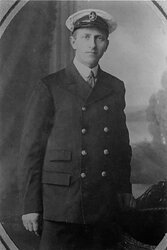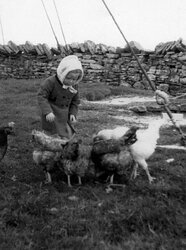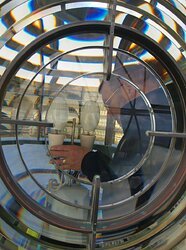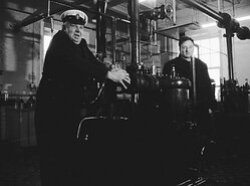Light Keepers
 Lighthouse Keepers were a disciplined and hard working group of men. From the establishment of the Northern Lighthouse Board in 1786, Lighthouse Keepers and engineers were required to ensure the continuous and smooth operation of the vital lights - keeping mariners safe around the coastline of Scotland.
Lighthouse Keepers were a disciplined and hard working group of men. From the establishment of the Northern Lighthouse Board in 1786, Lighthouse Keepers and engineers were required to ensure the continuous and smooth operation of the vital lights - keeping mariners safe around the coastline of Scotland.
In the earlier days, when the turning mechanism had to be wound regularly to keep it moving, it was essential that Lightkeepers were vigilant and kept their post manned. Falling asleep on watch was the most serious offence a Keeper could commit. There were 15 recorded instances of this between 1850 and 1900 - including one instance at Sumburgh which led to the dismissal of both Principal and Assistant Keepers when they agreed not to report each other.
Research during the project to restore the Lighthouse Buildings identified 119 different Principal, Assistant and Occasional Lighthouse Keepers who were stationed at Sumburgh Head between 1833 (James Tait and David Laughton) through to 1990/91 when the light was automated (Magnus Leask, Sandy Young and Harald Leask)
 Leslie Anderson's daughter, Morag, with chickens at Sumburgh Head
Life at Sumburgh Head would not have been easy at times - in the earlier years, there was no electricity or running water and all supplies had to be transported up the hill by horse and cart from the pier. That being said, many stories of happy times and family life have been told and there were several children born at Sumburgh Head, including Leslie Anderson's children Morag (in 1956) and Malcolm (in 1958). The families would keep hens and sheep and grow vegetables for their own use and to sell to supplement their income. The Lighthouse Board supplied as much coal and parafin as the Keepers required for heating, however there were few touches of luxury.
Leslie Anderson's daughter, Morag, with chickens at Sumburgh Head
Life at Sumburgh Head would not have been easy at times - in the earlier years, there was no electricity or running water and all supplies had to be transported up the hill by horse and cart from the pier. That being said, many stories of happy times and family life have been told and there were several children born at Sumburgh Head, including Leslie Anderson's children Morag (in 1956) and Malcolm (in 1958). The families would keep hens and sheep and grow vegetables for their own use and to sell to supplement their income. The Lighthouse Board supplied as much coal and parafin as the Keepers required for heating, however there were few touches of luxury.
George Cusiter (Assistant Keeper from 1959 to 1964) remembers the family living at Sumburgh Head during a period of alternations to install electricity, while his wife Iolene was heavily pregnant. He recalls that when they received their first television from 'Hay's' in Lerwick they thought they were in heaven! George and Iolene's youngest son Leslie was born at Sumburgh Head in August 1964.
Lighthouse Keepers would be stationed at various different locations during their careers, and their families would move with them. Some Keepers were employed as Occasional Keepers, and would attend the station on a daily basis, while living locally. Sumburgh Head has separate 'Occasional Keeper' bunk accommodation where local men could stay if they had early or late shifts. This allowed days off and holiday time for the Principal and Assistant Keepers who lived on site. When the Engine Room and Foghorn was built in 1905/06, the staffing level at Sumburgh Head increased as a third man was required to cope with the extra workload.
 Brian Johnson makes an adjustment to the light mechanism
Brian Johnson worked with the NLB as an Occasional Keeper and also as a Lighthouse Engineer. During the restoration project, Brian was ideally placed to work with the project team to restore the Engines and Foghorn, as he had many years experience with this very equipment. Subsequently, Brian re-joined the NLB and continues to maintain the Lighthouse Tower and Engines for both organisations.
Brian Johnson makes an adjustment to the light mechanism
Brian Johnson worked with the NLB as an Occasional Keeper and also as a Lighthouse Engineer. During the restoration project, Brian was ideally placed to work with the project team to restore the Engines and Foghorn, as he had many years experience with this very equipment. Subsequently, Brian re-joined the NLB and continues to maintain the Lighthouse Tower and Engines for both organisations.


